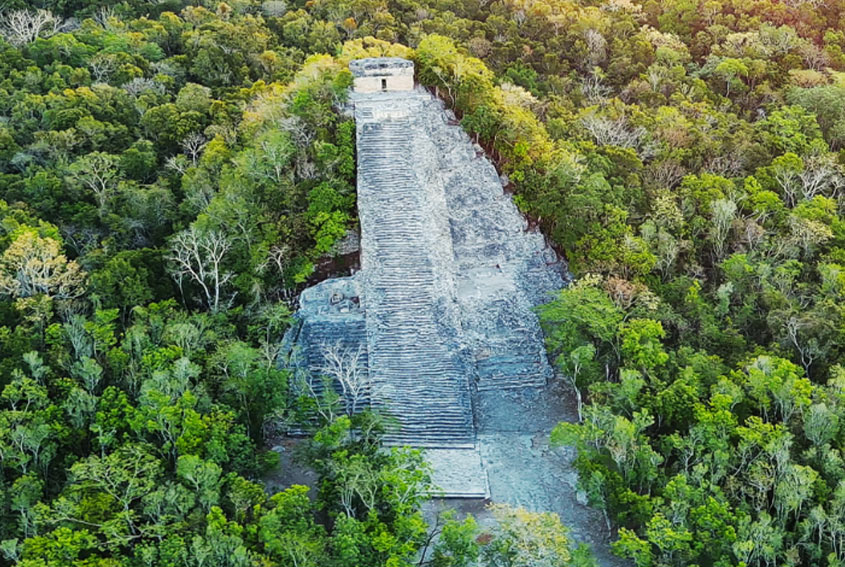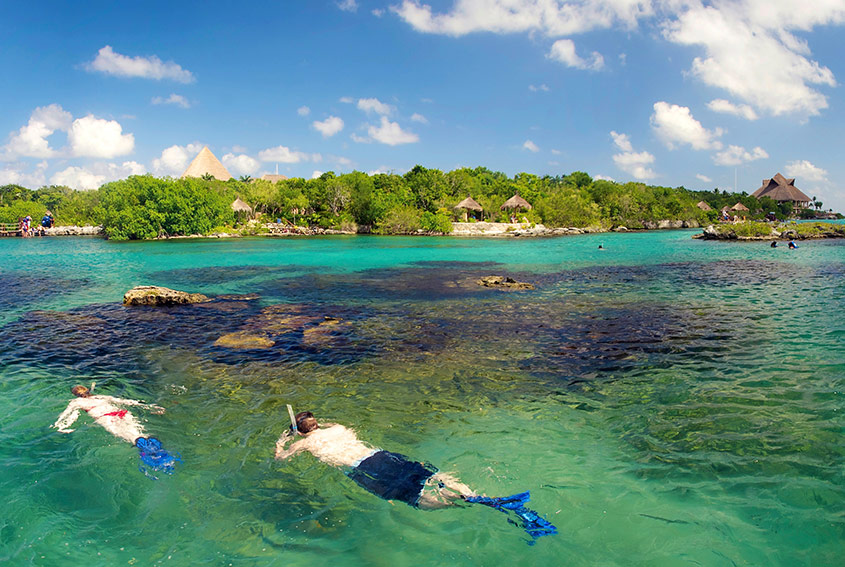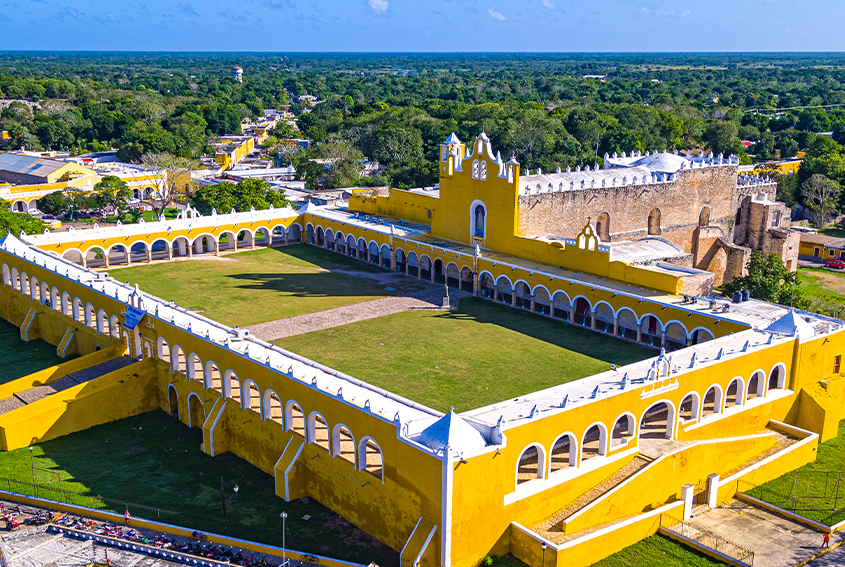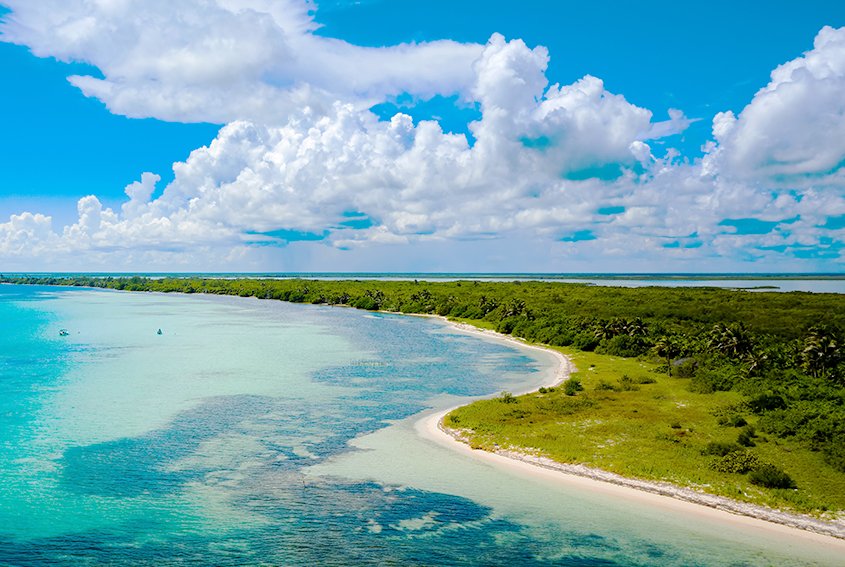The Travel Gallery – Blog
Here’s our monthly gallery showcasing some of the region’s many natural and historical attractions. How many have you visited? Which ones would you like to explore on future trips to Royal Resorts?
Sian Ka’an Biosphere Reserve
One of Mexico’s largest biosphere reserves, Sian Ka’an straddles a vast swathe of jungle and wetlands in northern and central Quintana Roo. In addition to tropical forest, mangroves and coastal lagoons, it also protects underground rivers and cenotes, Caribbean beaches and the coral world of the Mesoamerican Reef. It is home to the jaguar, puma and ocelot, spider and howler monkeys, manatee, crocodile and over 350 species of bird.
In Maya, Sian Ka’an means “where the sky is born” and its landscapes of water and sky become one. To explore the reserve, you can take a tour from Muyil, visiting the archaeological site of the same name and boarding a boat that will take you through the lagoons and along a canal in the mangroves that was dredged and widened for Mayan trading canoes more than 1,000 years ago. Another option is to take the coast road south from Tulum to Boca Paila and continue to the fishing community of Punta Allen on the shores of Bahía de la Asunción. The bird watching, fishing and diving trips and nature walks you can take from this bayside village make the long drive and potholes worth it.

Coba
From Tulum on the Riviera Maya coast, head inland to the ancient city of Coba (25 miles/41 km from the coast), one of the Maya World’s largest archaeological sites.
Coba means “waters ruffled by the wind” in Maya and the pyramids and temples at this jungle site are clustered around four shallow lakes. The city reached its peak during the Maya Classic period, A.D. 250-900, when it was an important trade center. Archaeologists believe that it had links with the Maya metropolis of Tikal in northern Guatemala and to communities on the Caribbean coast. A network of sacbes or Mayan roads also stretches from the heart of the city connecting it to other settlements in the area. The longest sacbe in the Maya World runs from the city to Yaxuná, near Chichén Itzá and is 101 km long.
The most recent discovery at the site is the identification of the ancient dynasty that dominated Coba and the names of 14 rulers through the study of hieroglyphic inscriptions carved on stelae and wall tablets.
The principal buildings or groups at Coba are Nohoch Mul, at 42 meters, the tallest pyramid in the northern Yucatán, the Cobá group, La Iglesia (another pyramid), Las Pinturas, the Ball Court, Xaibe and the Macanxoc group which has nine circular altars and eight stelae.

Xel-Ha
A chain of turquoise inlets, lagoons and crystalline cenotes fed by underground springs and surrounded by emerald-green forest and mangroves, Xel-Ha is a huge natural aquarium, the perfect spot for a day of snorkeling and splashy fun with the family. More than 90 species of fish of all shapes and sizes from the nearby reefs seek food and shade among the rocks rimming the caleta (inlet). Venture further into the forest and swim in the cenotes or sinkholes where you’ll see different species of freshwater fish and be able to try your hand at zip lining.

Izamal
Have you visited Yucatan’s golden city? Also known as the “city of three cultures”– Maya, Spanish and mestiza – Izamal is steeped in history and traditions and is one of Mexico’s Pueblos Mágicos. As the birthplace of Itzamna or Zamna, the principal deity in the Maya pantheon and inventor of writing, medicine and agriculture, it was a sacred center in ancient times. After the Spanish Conquest in the 16th century, Franciscan friars built a huge mission on top of the Pap-Hol-Chac pyramid. From the atrium of the bright yellow San Antonio de Padua Convent, you can see Kinich Kakmo, another ancient pyramid, one of the largest in Mexico in terms of volume.
This peaceful town is also a craft center, so when you have visited the monastery and archaeological sites, shop for folk art. There is a famous craft shop on the square and local artisans carve wood, weave hammocks and henequen mats and baskets, embroider cotton dresses, blouses and shirts and produce jewelry and colorful papier mâché butterflies.
Explore the Yucatan
Thomas More Travel can help you arrange trips to these spots and to all the natural and historical wonders in the Mexican Caribbean and Yucatan. Visit the website or the travel desk in the lobby of your resort.





